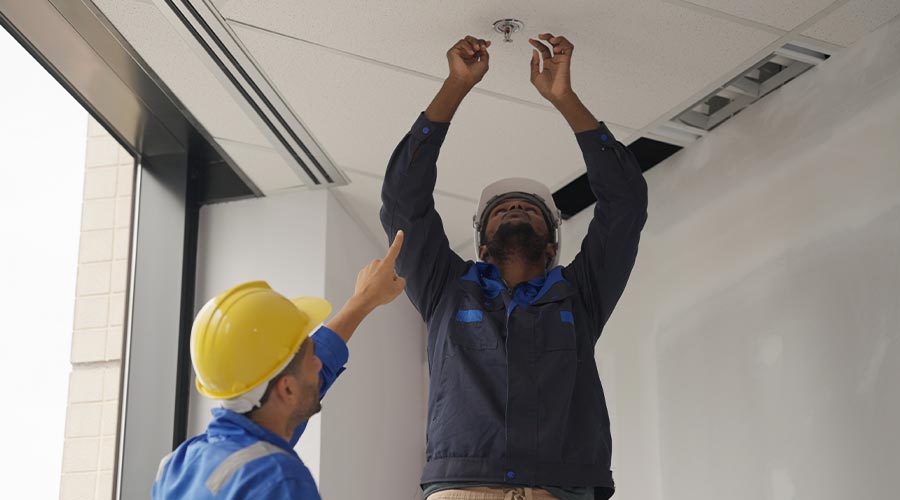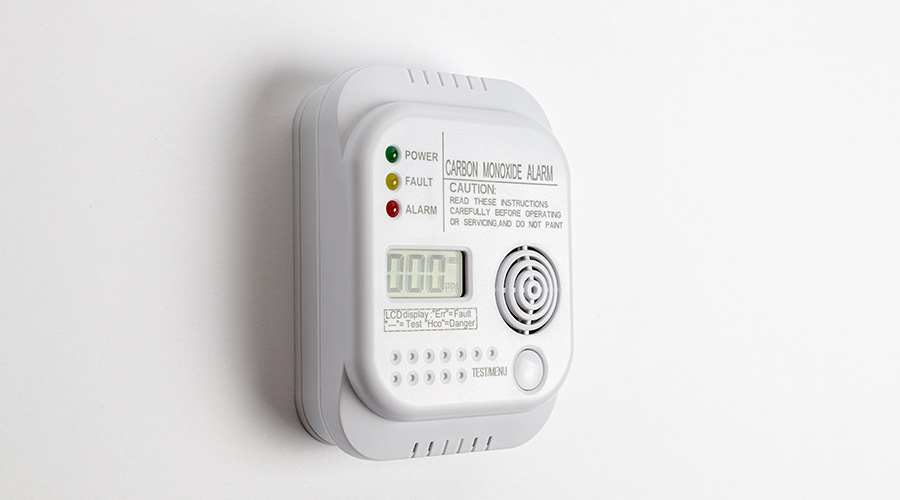A Head Start on Firestops
Understanding the role of firestops during a project’s design and installation phases can improve a facility’s long-term fire safety
As maintenance and engineering managers look for ways to improve the fire safety of their facilities, many of them have found that the small, overlooked components often can make the biggest difference and pay the largest dividends.
One such item that is both generally overlooked and misunderstood is the building firestop. Proper attention to the product and code considerations related to firestops can go a long way in improving a facility’s fire safety.
Roles and Myths
Firestops are a form of fire protection that serve to seal openings in fire-rated walls and floors. Typical openings included mechanical and electrical penetrations, control joints, and the junctions between fire-rated walls and floors. The proper use of firestops in these openings will help to prevent the spread of smoke and flame throughout a facility, limiting damage and giving building occupants more time to safely evacuate.
Firestop products detect heat or fire and automatically discharge or expand at specific locations they were designed to protect. They can be connected to a fixed fire-alarm system so that they trip an alarm and identify a location even while fighting the fire. In this latter respect, they work like the stationary building sprinkler system.
The most common misunderstanding concerning firestops is the belief that firestop is simply the material that is stuffed into the wall or floor opening. In reality, a firestop is a system that includes the fire- rated wall or floor, the opening, the cable or conduit that passes through the opening, and the material used to seal the opening.
For that reason, achieving an effective firestop requires taking all of the components present into consideration when selecting the material that is best suited for that application.
No single material works equally well in all applications in institutional and commercial facilities. Advances in the technology behind firestop materials have resulted in systems that perform well over the long-term. With more than 3,000 tested products on the market, selecting the right one calls for an understanding of an application’s requirements and the way the various materials function within the system.
Code Requirements
Building fire codes require that firestops be used for all fire-rated wall and floor penetrations and joints in new facilities and facility renovations. While they might not be required in older facilities, maintenance and engineering managers frequently add them to improve fire safety in those facilities.
Advances in firestop technology parallel changes in code requirements. Today, the most common code requirement for a firestop is the F rating. Expressed in hours, the F rating indicates the time a particular barrier can withstand exposure to a fire before being destroyed or allowing flame to pass through the opening.
Two other ratings are under consideration. The T rating, also expressed in hours, indicates the time it takes for the temperature on the non-fire side of the barrier to reach 325 degrees above the ambient temperature. Depending on the specific application, managers might look to the F and T ratings when selecting firestop material, even if not required to do so by code.
Common Materials
One of the most widely used materials for firestops is the fire putty stick. Similar to the putty that children play with, the sticks are designed to be molded easily around cables, conduits and piping.
Among their main advantages is their ability to maintain their pliability for a long period of time. As a result, when changes are made, the putty can be reworked and reused.
Another commonly used material is firestop caulk. This material is applied with a standard caulking gun. Most such products offer a four-hour rating. Some materials expand when exposed to heat, increasing their fire-protection capabilities.
One advantage of firestop caulk is that it can withstand movement. When changes are made to the installation, the caulk must be removed and replaced.
Managers also can turn to specially formulated mortar to seal large openings. Although similar in appearance to conventional mortar, this mortar differs both in chemical composition and performance properties. Firestop mortar is best suited in applications that are unlikely to be modified with time.
Firestop pillows are designed to be used in applications with large openings. Most installations do not require any type of wire reinforcement to hold the pillows in place around conduit, cables or cable trays. Firestop pillows typically offer a three-hour rating, and they are particularly well-suited for use in applications that are going to require frequent access.
Another firestop material that is well suited for use with electrical boxes is the inner stop. Mounted on the inside back wall of an electric box, the inner stop expands and seals any opening when exposed to heat. The material then forms a hard char to protect the box and its components.
Firestop materials are even available as gaskets for use with electrical receptacle and light switch plates. In the presence of heat, the gasket expands and seals all openings with a hard char, providing a one- to two-hour rating.
Considering Maintenance
Managers in commercial and institutional organizations of all sizes understand that most facilities are in a constant state of flux. This situation is particularly true when it comes to a facility’s electrical and telecommunications infrastructure.
It seems as though the moment an installation is completed, someone begins to change things. Technicians must install new cables and reroute conduit. Cable trays, once oversized, rapidly fill to capacity. Some wall penetrations might go unchanged for the life of the facility, but most will not. And every time a change occurs, managers must plan steps to ensure the integrity of the firestop materials.
Managers must take this constant state of flux into the decision-making process when selecting firestop materials for a particular application. It is hard enough to make sure an initial firestop installation is proper, but it can be almost impossible to ensure that the firestop will function as intended over the facility’s life, given the number of changes it is expected to endure.
A proper, easily maintained installation starts with careful planning during design. When possible, limit wall penetrations to areas that are accessible for inspection and maintenance. Concealed areas will be difficult or impossible to inspect, increasing the chances of potential hazards.
Next, use the firestop material best suited to the application. If managers anticipate changes to an installation, they can specify a firestop material that can be removed easily and reused. Technicians must remove and replace permanent and semipermanent materials, such as mortar or caulk, each time they make changes to the installation.
Finally, managers need to make certain that those working regularly with the cabling and other items that pass through these penetrations understand the importance of maintaining the integrity of the firestop. Spot inspections will help to verify the use of proper techniques.
Focus on Firestops
Managers seeking information on firestop products, requirements and applications can contact these organizations:
-
American Fire Sprinkler Association, www.sprinklernet.org
-
ASTM International, www.astm.org
-
Firestop Contractors International Association (FCIA), www.fcia.org. FCIA’s Manual of Practice, Section 07840, Appendix H, Specifications for Penetrations and Joints, gives approved methods and products for firestop systems.
-
National Association of State Fire Marshals, www.firemarshals.org
-
National Fire Protection Association, www.nfpa.org
-
Underwriters Laboratories, www.ul.com
-
Southwest Research Institute, www.swri.edu
|
Related Topics:











